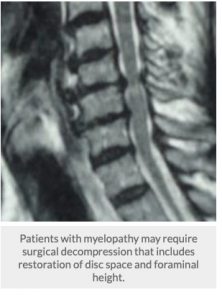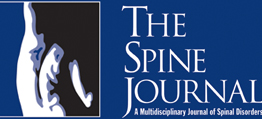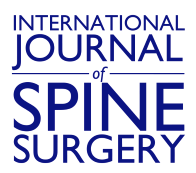
Meeting Highlight from NASS 2014
Written by Susan Spinasanta
During the Cervical Disc Arthroplasty section, Robert J. Jackson, MD, FACS, FAANS presented,Subsequent Surgery Rates after Treatment with TDR or ACDF at One or Two Levels: Results from an IDE Clinical Trial with Five-Year Follow-up. Dr. Jackson stated, “this is a prospective, randomized trial which examines the prevalence and reasons for secondary surgical intervention through five years at both index and adjacent levels in patients treated with a Mobi-C (LDR Spine, Austin, Texas) disc replacement or with ACDF(anterior discectomy and fusion) for one or two levels of cervical disc degeneration.”

Cervical Disc Degeneration Common
Cervical disc degeneration is a common problem seen by orthopaedic surgeons and neurosurgeons. Often, cervical pain is self-limiting and can often be resolved with non-surgical treatments. However, patients with myelopathy or cervical radiculopathy may require surgical decompression that includes restoration of disc space and foraminal height. These goals can be accomplished by either ACDF or TDR (total disc replacement).
Anterior Cervical Discectomy and Fusion Results
Dr. Jackson stated, “ACDF results historically have been good. Some of our better studies on the ACDF are the clinical trials comparing single-level ACDF to disc replacement. ACDF rates of fusion are consistent in the 90% range.” Furthermore, Neck Disability Index (NDI) scores are improved by upwards of 30 points.
Disadvantages include:
- Adjacent level disease with ACDF; increased range of motion or degeneration
- Reoperation rates are “2-6 times higher with ACDF in the single-level studies,” Dr. Jackson remarked
- Increased rates of pseudoarthrosis in two-level ACDF studies
Study Summary
The prospective study was conducted at 24 study sites with 599 patients.
Inclusion criteria included patients:
- Aged 18-69 with symptomatic radiculopathy or myelopathy
- One or two contiguous segments from C3-C7
- NDI scores >15
- Unresponsive to nonoperative treatment for ≥6 weeks
- Progressive neurologic symptoms
- No prior surgery or fusion at the treatment levels
Exclusion criteria included:
- Axial neck pain without radiculopathy or myelopathy
- Severe facet joint degeneration
- Cervical instability (eg, >11-degrees angulation
- Osteoporosis
- Osteopenia>
- Severe obesity
Patients were randomized in a 2:1 ratio: 1-level TDR, 1-level ACDF, 2-level TDR, 2-level ACDF. TDR patients were treated with the Mobi-C® artificial disc. ACDF patients were treated with allograft and anterior plate and screws.
- 1-level arm: 179 patients were treated with TDR; 81 with ACDF
- 2-level arm: 234 patients were treated with TDR; 105 with ACDF
Dr. Jackson stated, “The 60-month follow-up was 83.4% for the 1-level arm, 89.6% for the 2-level arm.”
Subsequent Surgery
Subsequent surgery was classified into index-only, index and adjacent, and adjacent-only surgery. Radiographic studies and the Kellgren-Lawrence scale were utilized to evaluate adjacent segment degeneration.
- 1-level arm outcomes reveal more subsequent surgeries (17.3%) within 5 years for the ACDF patients compared to TDR (4.5%)
- 2-level arm outcomes revealed similar findings: 21% in ACDF and 7.3% in TDR
Some patients required more than one subsequent surgery. Again, ACDF patients had more additional surgeries than TDR patients. “We looked at adjacent level degeneration for both ACDF and the disc replacement patients. In both the 1-level and the 2-level arms, we saw significantly more adjacent segment degeneration both above and below the treated levels for the fusion patients as compared to the disc replacement patients. This was defined as a change in the Kellgren-Lawrence score of 1 grade or more. We looked at adjacent level surgeries. Again for the 1-level, we saw 11.1% of the ACDF patients, 2.2% for the disc replacement patients. When we look at 2-levels, we saw 11.4% for the fusion patients, 3.4% for the disc replacement patients,” Dr. Jackson commented.
Common indications for additional surgery included:
- Symptomatic pseudoarthrosis
- 1-level ACDF patients: symptomatic adjacent level herniation
- 1-level TDR patients: radiculopathy
- 2-level ACDF: symptomatic pseudoarthrosis, symptomatic adjacent level herniation, or symptomatic adjacent segment degeneration
- 2-level TDR: neck pain, radiculopathy, symptomatic adjacent level herniation, or symptomatic adjacent segment degeneration
Conclusion
The authors concluded that, at 60-months, the Mobi-C® appears to be associated with less adjacent segment degeneration and reduced need for subsequent surgery(ies) in patients with 1- or 2-level cervical disc disease compared to ACDF.
To Read The Full Article Click Here





